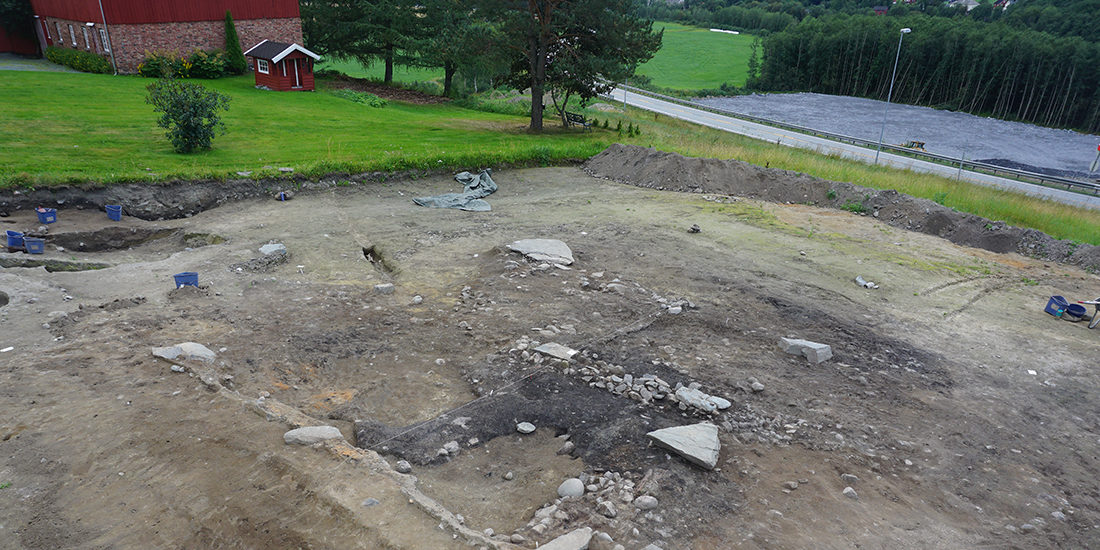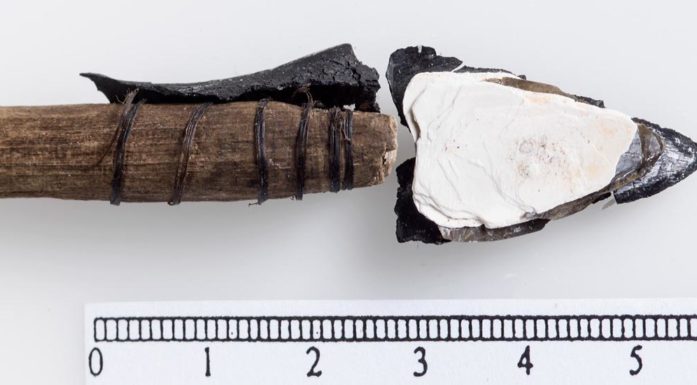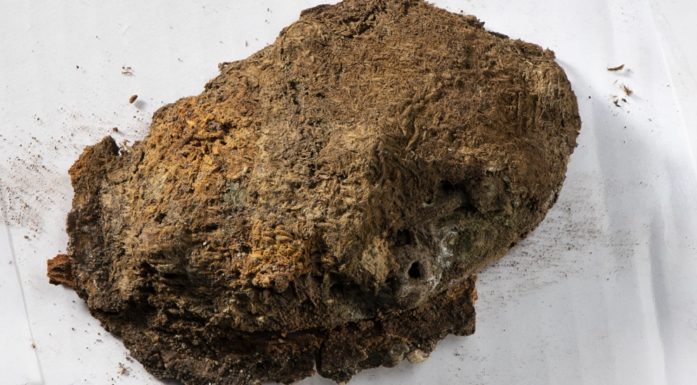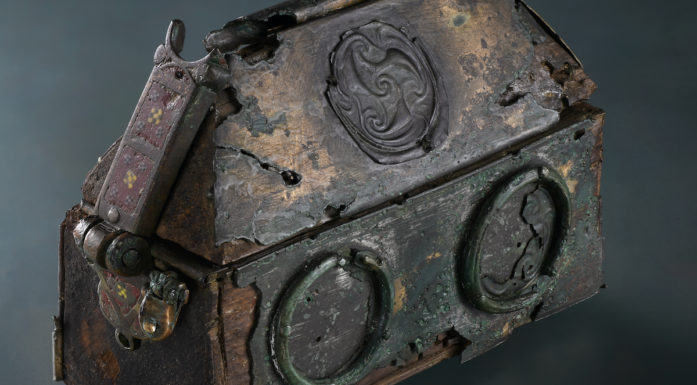Viking house remains found along planned E6 road route
Archaeologists at NTNU have discovered the remains of a Viking house from the early Middle Ages. It is a “very rare find,” says project manager Merete Moe Henriksen.
The main European highway along the length of Norway, the E6, will be expanded south of Trondheim. Before the highway project starts, archaeologists are excavating an area at the Foss Lian farm in Melhus municipality. They recently found clear traces of an old log structure here. Coal from the lower part of the building, the sill beam, has now been dated to the Viking Age or early Middle Ages (from the period 1025-1165 AD).
“House remains from this period are extremely rare, especially in rural areas,” says Merete Moe Henriksen, project manager and archaeologist at NTNU University Museum.
During the Iron Age, agricultural settlements moved around the countryside, but starting from about 600 CE onward – in the period before the Viking Age – people often lived in the same area for a long time.
“As a result, Viking settlements are often located on modern-day farmsteads, and archaeologists rarely excavate these areas,” says Henriksen.
- You may also like: Houses reused for over 1000 years during Stone Age
Threshold from Bronze Age
The building site at Foss Lian is about 6 metres by 6.5 metres. The archaeologists don’t yet know what function the building had.
Article continues below photo.
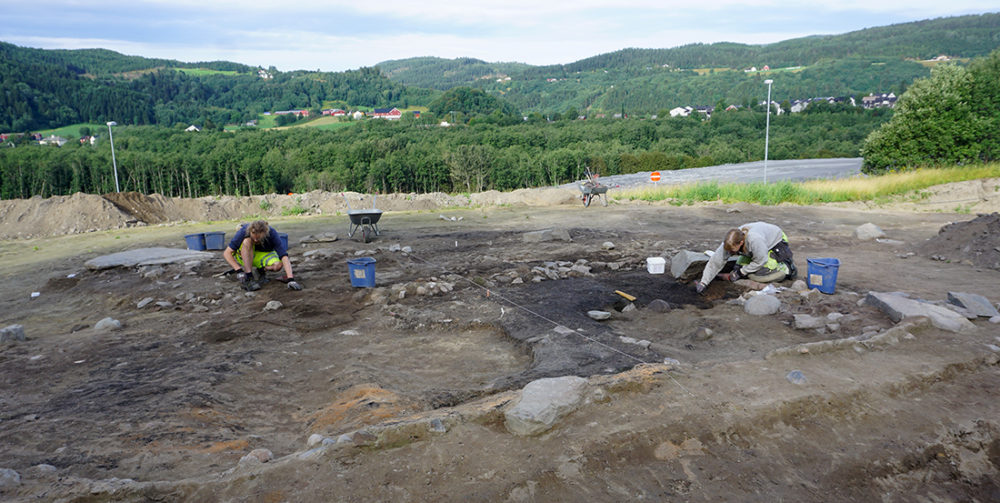
Archaeologists working at the site of the house remains in Melhus. Kjell A. Brevik (at left) and Kari Berg Dyrendal. Photo: Kristoffer R. Rantala, NTNU University Museum
Archaeologists also found a large flat stone at the entrance of the site that was used as a threshold. It contained cup marks, suggesting that it was reused from earlier times, probably the Bronze Age. Cup marks are a type of rock art, and are the most common type of rock carving in Scandinavia.
Several other objects were unearthed among and near the remains, including an iron arrowhead from the Viking Age or Early Middle Ages and several whetstones. A bucket from the late Germanic Iron Age was also discovered in the area just north of the site.
- You may also like: So what is “gand” sorcery – really?
Active region in earlier times
An archaeological survey in 2015 showed that the Foss Lian farm is situated on an occupation earth layer with a large number of heating stones. These rocks were exposed to high heat and used for cooking or heating water. That excavation also uncovered cultivated layers, postholes, cooking pits and a possible burial mound.
Article continues below photo.
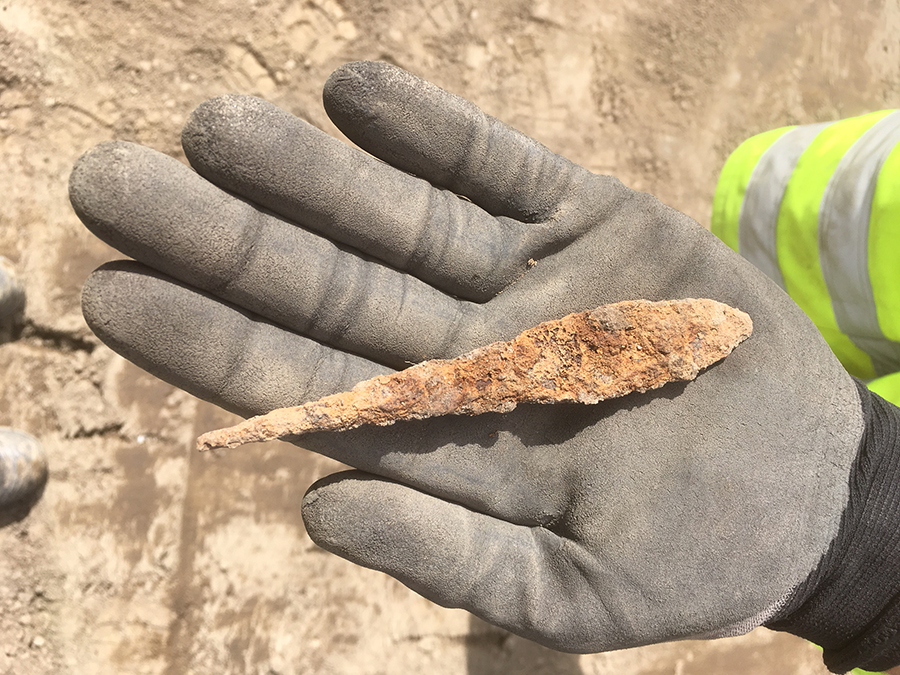
Archaeologists studied parts of a layer of heating stones in the woodshed on the farm in 2017. They also found objects such as baking stones, parts of cooking pots and whetstones. They were able to conclude that the site had been in more or less continuous use from the Viking era until today.
This year, larger parts of the heating stone layer have been excavated.
As archaeologists dig down further, Henriksen expects that even older settlements may emerge.
“This region figured prominently in earlier times, and has attracted a lot activity through the years,” says Henriksen.
High density of cultural relics
The area in Melhus has a high density of cultural relics from prehistoric and recent times. Among the older cultural remains are numerous rock carvings (including cup marks and Bronze Age horse and boat figures), gravesites, iron smelting facilities, trapping pits, charcoal piles (where charcoal was produced) and a medieval churchyard.
Remains of the nearby medieval church border the current archaeological site at Foss Lian farm. The church finds include a Christ figure dating to the second half of the 1100s. The church is thus assumed to have been built before that time. It stood until 1670, when two parishes merged and a new church was built in the nearby village of Hovin.
- You may also like: Cheerful Madonna with a lot of bling
Traces from Neolithic period
A chieftain’s grave lies 800 metres east of the excavations on Foss Lian farm. It was studied by archaeologists in 1934 and originates from the later Roman Iron Age (200-400 AD). The grave contained rings of gold and silver and a very well preserved double-edged sword.
On another site close by, NTNU archaeologists found sensational traces from the Bronze Age in an excavation last year.
It turned out that the area had been used as a burial field in the Bronze Age. Five graves and a kiln for casting bronze objects were found along with cooking pits and building foundations. The area was farmed in the Bronze Age. Several of the findings from this site are rare both in the central-Norwegian and Norwegian context.
The excavations being made to expand the E6 are funded by Nye Veier AS (New Roads).
Read more about this in Norwegian on the Norwegian archaeology site norark.no.
